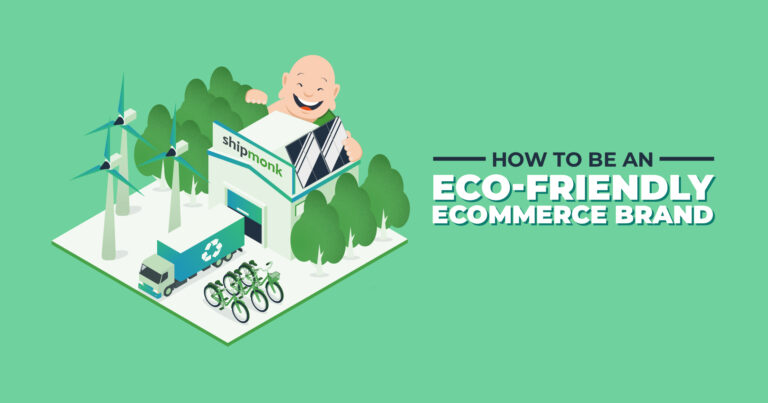7 Best eCommerce Shipping Strategies for Small Businesses
I hate to be the one that breaks it to you, but your online business may be losing a lot of money because you don’t have a sound eCommerce shipping strategy. Picture this:
You and your team work hard, spend hard-earned marketing dollars and crunch the data to drive consumers to your site. Now they’re on your site, see something they love, add it to their cart – woohoo! – click “Proceed to checkout” then boom! They leave their cart. They leave your site. You lose a sale. What just happened? What did you possibly do wrong? Read on…
The #1 Reason Customers Abandon Their Cart: Shipping and Handling
You can spare no expense to design a site with the best user experience in your niche, increase your marketing budget, then double check your analytics. Bad news: none of that solves the core problem. Good news: We’ve got seven specific tactics for you to incorporate into your shipping strategy that will reduce your shipping costs for your business and for your customers without sacrificing the amount of time it takes to deliver the order.
Number 1: Calculate Dimensional (Volumetric) Weight
Before we go into all the different strategies to reduce your shipping costs, you need to know the dimensional (aka volumetric) weight of your boxed items. The major shipping carriers—USPS, FedEx, UPS, and DHL—all use dimensional weight to calculate shipping rates. Besides being a good business practice when it comes to logistics like product storage, you also need to know dimensional weight to ensure you’re using the best supplier and the best method to get the lowest rate possible.
Dimensional weight reflects the density of the package by comparing the volume (length x width x height) to the actual weight of the package. After comparing the dimensional weight to the actual weight, the carrier bills for shipping based on the heavier weight.
Why does dimensional weight matter?
Until the past few years, shipping carriers billed based on the actual weight of the package. Online retailers that sold large, lightweight items weren’t charged for the amount of space they occupied on the truck or plane. Once the carriers realized this was an issue (e.g. they weren’t making as much money), they decided to implement dimensional weight to compensate for those types of items.
Each carrier calculates dimensional weight in a slightly different way, so we’ve included links to dimensional weight calculators by carrier:
Number 2: Negotiate with Shipping Carriers
Pricing is relatively straightforward when it comes to shipping: the more your ship, the less you pay. Due to lack of sheer volume, many small businesses don’t realize they actually can have negotiating power and/or they think that the prices listed on the carrier’s website are set in stone. It turns out, though, that there are two keys negotiating points when it comes to shipping carriers:
- Play the field
- Forecast your Shipping Volume.
If you’re currently shipping a decent amount of volume, chances are you have an account rep and are being solicited by other sales representatives from competing carriers. (If not, do a quick Google search for the sales department and request to speak with a salesperson about eCommerce shipping.) Don’t be afraid to let your primary carrier know that other companies are vying for your business and see what they’ll do to lower their rates.
Quick tip: If your volume has grown to the point that you’re on the brink of shipping a significantly greater amount of volume and only need a slight boost to make the numbers required for shipping at the lower rate, include your inbound shipments. Instead of reimbursing your supplier for the shipping fees, have them use your account number.
If you’re not shipping with enough volume to persuade carriers into offering you a lower rate, your best bet is to forecast your shipping volume based on projected sales. Major carriers like UPS and FedEx are willing to reduce rates upfront if they believe they’ll win future business when your volume increases. You’re not the first startup or small business they’ve worked with, so they’ll give you time—typically three months—to increase your shipping volume before demanding that you hit a specified number of shipments per month. Take advantage of the provisional lower shipping rates and put the money saved into marketing and sales to ensure you can retain the lower rates long-term.
Number 3: Leverage a Fulfillment Center
You’ve negotiated for better rates with your shipping carriers, but they’re still not low enough to benefit your customers. What can you do now? Leverage a fulfillment center! This can be highly advantageous because fulfillment centers have extremely low shipping rates due to their overall shipping volume per day. As experts in shipping and logistics, they’ll be able to guide you on the best practices and other logistics strategies to reduce shipping costs. If your business is seasonal, thus causing your number of shipments to fluctuate throughout the year, a fulfillment center will be able to lock in pricing. Then your customers won’t be affected each time they place an order.
Related Article: Cost Savings by Using a Fulfillment Company
Number 4: Offer Free Shipping With a Minimum Order
Where there’s a weakness, there lies opportunity. If customers are abandoning your site—after they’ve taken all that time to browse and add products to their cart—just because the shipping is too high, why not eliminate that issue altogether and attract new customers by offering FREE SHIPPING?
The first hack to offering free shipping is establishing a minimum order value to qualify for free shipping. Although you’ll be absorbing the shipping cost, the average value of your orders will increase and make up for any losses. However, before you go wild and offer free shipping across the board, make sure you review the margins on your products and map exactly where you’ll be shipping. You may have to adjust the minimum for international shipments or only offer free shipping on specific products.
Some other things to consider before offering free shipping are seasons of the year and loyalty programs. You might want to provide periodical free shipping as a value proposition throughout the year as a call-to-action to ignite more sales. Also, consider offering free shipping to loyalty members or use a lead generator to gather useful information. Before customers receive free shipping, make them sign up for an account, or join your email list, or refer a friend. This way you can target the customer with upcoming promotions, sales, and new releases using a marketing automation tool. Free shipping—combined with some of our other tips—can be a highly advantageous and profitable marketing tactic for your business.
Number 5: At-Cost Shipping for Customers
You’ve done the numbers, but hard as you try, you’re simply unfit to absorb the costs of offering free shipping. Don’t lose hope, though! You can still give customers the best deal possible by charging them exactly what you would pay to ship the items. Done properly, this approach is not only beneficial from a cost-savings standpoint for both parties, but it can build a level of transparency into your brand. Let your customers know that the shipping rates are rock bottom and that you are not making one dime on shipping and handling. Redirect those negative feelings about shipping costs into a trust for your brand that can be built upon throughout the customer’s journey with you. Remember: people buy from companies they like, and there’s no better way to make your customers like you and win them over than by being transparent.
Bonus tip: Display your pricing model to your customers during checkout. If you utilize a shopping cart like Shopify, set up real-time shipping quotes, so they can see firsthand that the prices are not inflated.
Number 6: Take Advantage of Flat Rate Shipping
Depending on the size and weight of your products, flat rate shipping may be a good option. You can offer flat rate shipping to customers based on item size, item weight, or the total number of items. Before you start promoting flat rate shipping on your website, though, you’ll need to do your homework and calculate which flat rate and which carrier works best for your business. For example, if you’re selling small, heavy items, take advantage of flat rate boxes from USPS. Many shipping carriers offer different shipping methods to make it simpler for their customers. There are a lot of opportunities and a lot of flexibility when it comes to flat rate shipping. Therefore, you’ll need to research and test different carriers and methods to take full advantage of all possible options.
Number 7: Shop Around According to Your SKUs
Shopping around for the cheapest shipping option based on your products size and weight may sound rudimental, but it’s often overlooked by a lot of small businesses. When speaking with eCommerce business owners, we often find that they don’t shop around because it’s far too easy to become overwhelmed just when comparing shipping carriers, let alone the various methods each of those carriers offer.
Here are some questions to ask before shopping around:
- Is the item expensive? (If you’re selling a cost-friendly item, chances are your customer will not want to pay very much for shipping)
- What is the dimensional size of the packed item?
- What is the weight of the packed item?
- Will your item fit in a standard package?
- Is it heavy or light in relation to its size?
- How many shipments do you average per month?
- What is your proportion of domestic vs. international shipments?
- How long is your customer willing to wait for the product?
- Would your customer be willing to pay more for expedited shipping?
That’s a lot of work, isn’t it? And there really is no shortcut for doing all this research. But having the answers to these fundamental questions is the way to begin to determine which carriers and shipping methods are right for your business. If you’d like to speak with a logistics expert—free of charge—about your particular shipping strategy and any areas where you could be saving, shoot us an email or schedule a phone call. We’d love to help.
Happy shipping!



